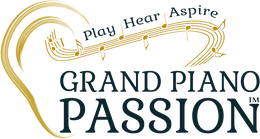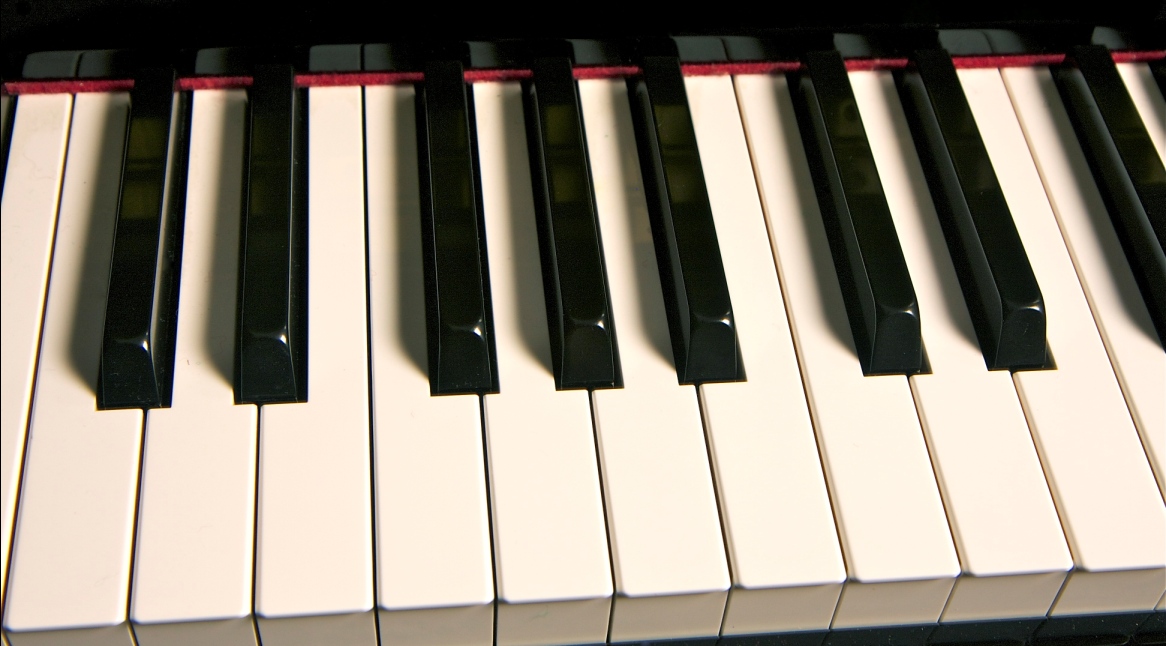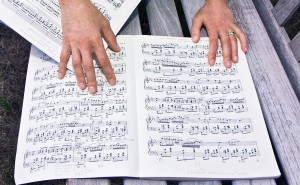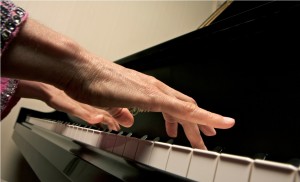Fellow Stumblers: I suspect there are no quick answers to sight-reading classical piano music and perhaps also no magical moment where sight-reading just happens (though I sometimes dream there is). I do know that it does gradually get better.
Here’s the advice I’ve gotten: find a huge pile of pieces that are much simpler than those you study for your adult piano lessons. I mean, really simple. I mean, Twinkle, Twinkle (but not by Mozart). Once a day, pull out one of these easy pieces and play it through without stopping (no matter what). Play it through just once. Don’t second-guess the notes, proceed slowly, and don’t stop. The next day, try another one.
Before you begin playing one of those easy pieces, I find it does help to sit back a moment, look at the key signature, and remind yourself what key those sharps or flats constitute. It probably helps to go through and recognize some of the chords too and identify places where you’re just going up the scale. All before you touch the keyboard. Like reading the table of contents.
My teacher at my adult piano lessons tells me to read the bass line first (so read down-to-up on the staff)—which I find hard because I’m drawn to the treble line. I guess you could say with sight-reading, it’s a bottoms-up process.
The other thing that helps is to purposely read ahead. If you read in the moment, your fingers won’t anticipate where to go next. But if you can force yourself to read a couple of notes ahead (as I do when I read a book out loud, for example), you can get your hand going the right way instead of being constantly faked out.
One idea I have is that, rather like reading words, I can read music in chunks. I see a word like father and I see it all at once. I don’t have to read each letter and form it into a word. I think you can actually build subroutines like this for reading music. Recognize the scale, the tonic—simple chunk pieces—once you get a roll on with that, you can look ahead.
The rub about sight-reading is that it’s another one of those 15 minutes a day things—15 minutes of Hanon, 15 minutes of scales, 15 minutes of sight-reading. Which doesn’t leave much other time in my piano practice sessions.
For me, the other problem (and not just with sight-reading) is that there are too many things going on at once—none of which is really automatic. Because even if you can translate the notes quickly to your fingers—then you are also afflicted with staccatos, legatos, portatos, dynamics, fortes, pianos, smorzandos (for goodness sakes), fingering, quarter notes and half notes (or crotchets, quavers, and minims—ah, another problem).
I found one of the biggest steps forward I go each year is when I go to SummerKeys for two weeks—you might call it a music boot camp. I finally get to focus, and it’s not so hard to do a bunch of sight-reading when I am studying music several hours a day and not just trying to squeeze it in. It’s not like night and day—but I can always feel the improvement.
My personal wish is to feel free on the piano. To make music instead of rendering pale and shaky imitations. To be able to just let go and play and have the music be fun instead of an exercise in frustration. That’s why I’m committed to working on my sight-reading.





I do not have a wide enough vision to see both the bass & treble clef at the same time. I can read and play the clefs separately but, when it comes to playing them together it seems like I have to learn the piece all over again.
Any tips on combing both hands or more specifically is there a better way to read piano music more efficiently without reading both clefs separately?
DeeKay, interesting question. Here are some ideas from the author, Cathie Meetre:
How about putting a piece of card over the music and sliding it to the right one measure at a time or even two notes at a time. Just play that little bit – maybe 4 notes, two in each hand, but try to scan it all at once – and even play it all at once and then cover it up and play it and visualize the music as you play. Like reading a single phrase in a book. It won’t make much sense musically, but I think it might help.
Children in China learn to read Chinese. Children here learn English. Accomplished readers in both languages are always moving their eyes ahead and they have placed the previous words in a mental buffer ready to say. Children in Music learn to read music the same way and at the same stage of brain development. It’s pretty clear children are wired to do this. Individuals who don’t learn to read as children because they lacked the opportunity, rarely acquire the same facility as an equivalently intelligent earlier reader. I think this is true of music too, alas.
My sight reading has increased lately because I started reading inversions. I know, for example in the Key of C Major, when I am in first inversion when (e g — c ) the g – c (place your hand on e g — c) is heading to the “right of the keyboard” be it right or left hand. I know when I am in second inversion when ( g — c e ) the g – c (place your hand on g — c e) is heading to the “left of the keyboard” be it right or left hand. The placement of these notes on the sheet music both treble and bass clef are position as such: e g —-c (up or right) is the first inversion and the g—c e (down or left) is the second inversion. Once you see these inversions as the “right – left” position on the piano and the sheet music, I guarantee that your sight reading will progress rapidly. And you can apply that knowledge to every new key on the key board.